Grant Morrison on Game Narrative as Environment
July 24th, 2010

I was very impressed to read a recent interview with acclaimed comic book writer Grant Morrison who, with brilliant articulation, identified the medium-specific advantages of video game narrative (environment as character) and then elaborates on how he’d like to introduce these elements into the comic book medium. This makes me terribly excited because Morrison is fantastically talented, really understands whatever subject matter he chooses to become invested in and is testing out this new approach on nothing less than Batman, w00t! In anycase, I’ve pasted the particular excerpt below, please click here to read the full interview.
IGN Comics: We also know you often draw much inspiration from the world around you – music, film, research, etc. Is anything in particular informing your development of Batman Inc?
Morrison: So many comics are still inspired by Hollywood movies, (many of which are now inspired, in turn, by comics in that pop-will- eat-itself way), and by extension a kind of approach to narrative which dates back to Aristotle’s Poetics and the fundamentals of Greek Drama, almost two and a half thousand years ago, in the name of our dear lords Hermes and Zeus Almighty!
It occurred to me, immersed in my 50th hour of Just Cause 2, how far beyond that silent audience, proscenium arch, here’s some well-paid ‘actor’ pretending to be someone else experience we’d gone and how very timidly other forms of storytelling entertainment had reacted to the challenge of the beast in their midst, this ultimate choose your own adventure playground that in some cases simulates ‘life’ and terrain so effectively it’s like actually like going on vacation (how many gamers know the geography of Silent Hill as well as their own town? Do streets and locations from Liberty City, Panau, or Saints Row, turn up in the dreams of other gamers like they do in mine? I’ll lay odds they do. These amazing virtual environments appear in my memories as real as Chicago or London. Paris, Venice, New Delhi, Jogjakarta or any of the non-CGI cities I’ve been to.
Although many current video games are constructed on a narrative spine which follows the basic action movie hero-beats-baddie script, it’s never that aspect of the player’s interaction with the virtual environment that’s important. I know I tend to skip the cut scenes in games without losing any awareness of the arrow of narrative progression. Batman Inc. is an attempt to do a comic influenced by the storytelling structures, images, senses of scale, movement and perspective and so on that I’ve absorbed from games. The experience of actually being Batman in the Arkham Asylum game was profoundly eerie and I’d love to find a way to capture that depth of involvement and identification with the character and environment. I’m not sure how much of this I’ll be able to realise but this is where I’m beginning my thinking on what might make Batman Inc. different from other books.
Batman Inc. is Brave and the Bold meets Just Cause or Call of Duty: Modern Warfare! That’s my pitch! Throw in a dash of Mission Impossible and a pinch of The Magic Christian and it’s nearly there.
As research for my book Supergods, I re-read a lot of my old comics and got really excited by that old ‘musical’ approach to writing superhero comics I saw especially in the work of Roy Thomas (the Kree/Skrull War is an amazing orchestration of plot, characters and ideas into a multi-levelled narrative that uses several interwoven voices – including blended 1st, 2nd and 3rd person captions – to practically conjure sound onto the paper. Almost every scene has some reference to sound, in fact, from the opening, apocalyptic door slam, through Black Bolt’s whisper and the continually pointed out lack of sound in space), Steve Engelhart, Doug Moench, Don McGregor and the others of Marvel’s ’70s auteur generation.
The popular ‘cinematic’ approach to comics has largely done away with those poetic narrative captions but an even greater loss is that free flowing multi-perspectival viewpoint – when was the last time you read a comic that addressed the character directly ‘You are the Batman!!’ before sliding into an omniscient 3rd person narrative voice, ‘He is the Batman!!’ then shifting to a 1st Person ‘I am the Batman.’ voice, all in the same story! That kind of writing has a metamorphic, psychedelic and very refreshing quality that seemed to tap more directly into the way comics can work together as words and pictures. The dance between writer and artist seems more fluid and the comic book artist is set free from the constraints of being a mere storyboardist, the writer gets a chance to express his or her own voice rather than just the voices of the characters etc. So with this book, I’m trying to find a road into that kind of multi-narrative approach that feels modern rather than retro.
We’ll see how it works out and how far it seems appropriate to push in that direction but these are the influences I’ve been absorbing and the thoughts I’ve been having at the beginning of the process. For me, it’s about seeing the familiar from a slightly different perspective.
The Value Proposition of the Point and Click
July 22nd, 2010
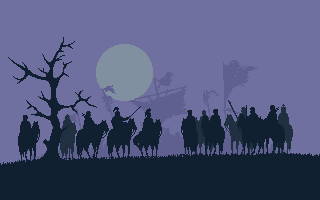
I started playing the classic point and click adventure game, Lure of the Temptress, today and after an hour of play subsequently decided to end my session and probably never load the game up ever again. As I said in my Eternal Darkness post:
The inherent nature of the [old school adventure] genre (fetch questing and rubbing items against random pieces of the environment) relies on the solid construction of puzzles and contextual bits in between to make itself enjoyable.
The reason why the point and click adventure game died out is because the puzzles were so arcane and, as the stories in games from other genres improved, the context (the writing, graphics and characters) was insufficient enough to keep players interested in what is ultimately tedious gameplay. Fortunately this isn’t the case with most modern point and click adventure games such as the ever-continuing Monkey Island and Sam and Max series. Both of these franchises have remained contextually interesting, streamlining interface contrivances and being careful with the way puzzles are structured. The point and click adventure still a bit of an acquired taste—and of largely little interest to younger players—but one sustainable enough to keep itself commercially afloat, and that’s all that matters, really.
In thinking about the old-school adventure games that I’m currently willing to invest in, I’ve been running through this entire thought process of whether my interest in the contextual outweighs the possible staleness of the puzzles and clunkiness of the interface in the mechanical. Revisiting the old Monkey Island games (NOT in HD) is worthwhile, since they’re nostalgic. Beneath a Steal Sky is on my Windows partition, because of my interest in artist Dave Gibbons, the interpretation of a dystopian, overpopulated Australian society and because the interface is stupidly excellent and easy to use. The Resident Evil games are still on my list because I have a fondness for PS-one era pre-rendered backdrops and get a kick out of the story. Grim Fandango interests me because its so damn funny that its worth the torment of non-sensical puzzle design.
In a way, it’s kinda sad that I weigh up the value proposition of games of this genre in such a manner. But there is no denying that the elements which previously illuminated point and click adventure titles (beautifully illustrated graphics, clever dialogue, solid length) have been eclipsed by other genres and that the brick and mortar premise requires fundamental updating and reinvention.
PS. If you are interested in sussing out more of this genre, Kurt Kuluta over at Hardcore Gaming 101 has been covering the genre extensively over the past few months. Maybe you’ll find something you like, even though I’m a bit adverse to the genre, I wouldn’t dissuade you from taking a look see.
PSS. My opinions here are a bit skewed by fact that I haven’t taken the liberty of actively trying some of the great adventure games from the indie scene, many of which excite me and perhaps also evidence the recent growth in the genre. This article is the start of something on-going, I hope.
Player Roles and Heavy Rain
July 17th, 2010
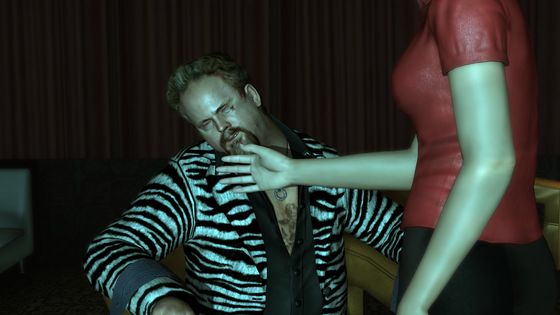
Heavy Rain‘s core conceit is the question: How far would you go for the one you love? Those who have played Heavy Rain will know that this question is most obviously evident in the trials undertaken by the lead protagonist Ethan Mars, but it’s also one which ripples into the tangled stories of the other cast members. To follow through on this question, Heavy Rain establishes relatable characters (through menial, day-to-day context) and puts them in extreme situations which are constructed to press this question. These situations bring the player’s differing roles of agency to the forefront. In many respects, these sequences create deliberation between the different parties that the player occupies, which is why players agonize over their decisions; they can’t get everyone to agree and are forced into a tough compromise. Here is breakdown of the player’s roles of agency and the respective questions asked to each player role at each trial, using Ethan as the model:
Co-author
If I were Ethan, what would I do?
(based on the player’s understanding of the avatar’s principles combined with their own)
Avatar
Within my inferred understanding of Ethan’s character, what do I think he would do?
(based on the player’s understanding of the avatar’s principles, independent of their own)
Viewer
What do I want to see happen, what is most entertaining?
(based on the player’s compulsion)
Director
What is the responsible action, the right thing to do?
(based on the player’s ethical interpretation)
When we play video games, we don’t just act upon our own whim, but rather our actions are influenced by the different ways we engage with the game. When I take the role of Solid Snake inMetal Gear Solid, I share this role with his—the avatar’s—doctrine. I know that Snake is cunning, inventive and stealthy, so my actions are mapped to my understanding of what it means in inhabit this character. I, therefore, have the freedom to act within my own interpretation of the character. This is called co-authorship.
The avatar is also their own character, so they can exist independently of the player. As mentioned in the previous article, there are times when we are not in control of the avatar. For instance, in cut scenes. In these instances the avatar is in their own frame of mind, without our influence, which affects how we think respond to the second question. Another way to think of this is, “if there was a cut scene here, what would the avatar most likely do?”
Different types of games emphasize different roles. Open world action games such as Just Cause 2or Saints Row often feature “empty” avatars or at the very least avatars bent on fun and mayhem, because these games are viewer-centric. That is, the player’s actions are based around whatever seems fun or entertaining. Injecting prescribed character into these avatars works against the impetus of enjoyment as it supposes the player model their behavior around the predefined persona of the avatar. This was apparent in Grand Theft Auto IV, where some players felt uncomfortable with simulating the murder and destruction which the previous GTA games reveled in. Because Niko was a responsible, good-willed avatar such actions would contradict his innocent persona.
The director is the Jiminy Cricket-esque conscience which puts ethical considerations into focus. Normally, most games are ethically sound, but occasional titles, like Heavy Rain, force the player into moments of moral and ethical deliberation. It’s here where we must consider our role as the director of the experience.
All character-based games feature co-authorship and the avatar’s prescribed perspective. In video games the player needs a body to inhibit and a base level persona to model their behavior on; these are basic requisites that determine play. The presence of the other two roles depends on the subject matter of the game. What is most fascinating about Heavy Rain is the way these moments make the player conscious of their multiple identities within the interactive medium. We’re not just making one choice, we’re making many and under pressure.



 Game Design Companion: A Critical Analysis of Wario Land 4 - $7.99
Game Design Companion: A Critical Analysis of Wario Land 4 - $7.99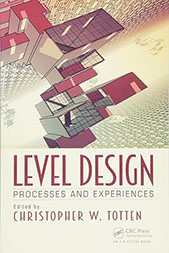 Level Design: Processes and Experiences
Level Design: Processes and Experiences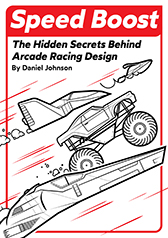 Speed Boost: The Hidden Secrets Behind Arcade Racing Design - $5.99
Speed Boost: The Hidden Secrets Behind Arcade Racing Design - $5.99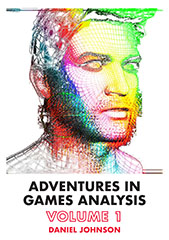 Adventures in Games Analysis: Volume I - $5.99
Adventures in Games Analysis: Volume I - $5.99







